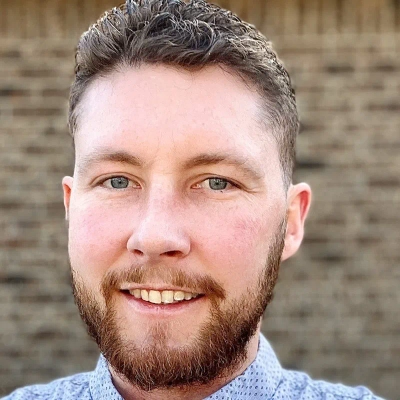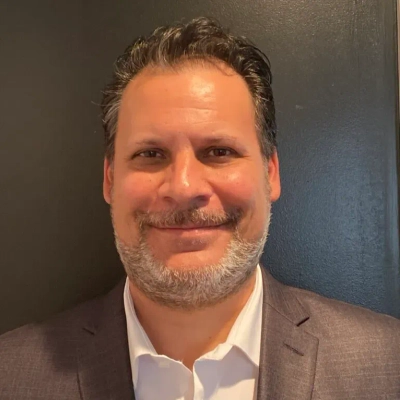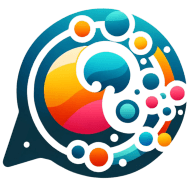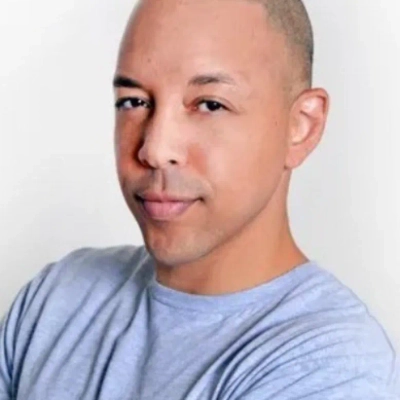14 Ways to Personalize Your Loyalty Program Beyond Points Systems"
Loyalty programs are evolving beyond simple point systems, and businesses are finding innovative ways to engage their customers. This article explores cutting-edge strategies for personalizing loyalty programs, drawing insights from industry experts. Discover how to create meaningful connections with customers through tailored experiences, exclusive benefits, and community-focused initiatives.
- Build Championship Teams with Clients
- Create Trust Through Aftercare Check-ins
- Anticipate Needs with Personalized Operations Data
- Offer Experience-Based Rewards Tied to Behavior
- Empower Alumni as Mentors in Recovery
- Give Workshops Their Saturdays Back
- Spotlight Creators Based on Engagement Quality
- Practice Intentional Professional Gratitude
- Continue Mission to Serve the Community
- Tailor Rewards to Individual Health Goals
- Equip Landowners with Stage-Specific Resources
- Provide Exclusive Investment Strategy Sessions
- Establish a Distress Relief Network
- Share Personal Blueprint for Financial Freedom
Build Championship Teams with Clients
I've developed what I call our 'Championship Team Approach' - drawing from my football background, I treat each client relationship like building a winning team where everyone has a role long after the game ends. Instead of points, I remember personal details like their children's sports schedules and send congratulatory texts when their teams make the playoffs, or I'll reach out with investment opportunities that align with goals they shared during our initial conversations. The feedback that proved this worked came when a past client called to say, "Parker, you've been more supportive of my family's growth than some of our actual relatives - when we're ready to buy our next property, you're our first call." That's when I knew treating relationships like lifelong team partnerships creates loyalty that no rewards program could match.
Create Trust Through Aftercare Check-ins
Most people think loyalty programs are about points or discounts, but in roofing, that doesn't mean much. Homeowners don't replace or repair their roofs often enough for a punch card system to matter. What I realized early on is that loyalty in this business isn't built through coupons—it's built through trust and remembering the customer long after the job is done.
At Achilles Roofing, I started personalizing our approach by setting up what I call "aftercare check-ins." Instead of just finishing a roof and sending an invoice, we make it a point to circle back at key times. Six months after a project, we reach out to see how everything is holding up. A year later, we send a short inspection report—free of charge—just to give peace of mind before storm season. For bigger projects, we've even sent handwritten thank-you notes and small home care tips tailored to the property. None of it is automated, and none of it feels generic.
The key was making it about people, not points. Homeowners remember when someone actually takes the time to check on them without trying to sell something. We've had customers tell us that it felt like we treated their home as if it were our own. One family in Houston said they chose us again for a patio cover simply because we were the only contractor who called back a year after their roof replacement just to make sure they were still leak-free.
The feedback made it clear this approach was working. We started seeing more repeat work and, just as important, referrals. Customers weren't just satisfied with a job—they felt remembered. That's the kind of loyalty no "points system" can buy. My advice is simple: in industries like ours, loyalty comes from showing up even when you're not being paid to.
Anticipate Needs with Personalized Operations Data
For a professional, a traditional points-based loyalty program feels impersonal. Our customers aren't looking for a few dollars off their next order; they're looking for a partner who understands their needs. In the past, our loyalty program was a simple transaction—you buy, you get points. We quickly realized it was unsuccessful because our customers didn't feel valued; they felt like a number.
Our approach to personalizing the program was to use our operations data to anticipate their needs. We made the simple, but powerful, decision to stop rewarding customers for what they bought and start rewarding them by showing we understood what they needed.
Here's how we did it. Our operations team created a system to track a customer's specific purchase history. If a customer bought a part for a particular kind of equipment, we knew that. From a marketing standpoint, we used that information to send them a highly personalized and helpful email. Instead of a generic coupon, the email would say, "Hey, I saw you purchased this part for this specific job. Here is a link to a guide on a common challenge you might face with that installation." We would also send them a follow-up a few weeks later, saying, "Based on your purchase history, here are a few other parts that professionals often need to complete that type of job."
The feedback we received indicated this approach was working, but it wasn't in a survey. It was in the direct emails and phone calls we received from customers saying, "I was just thinking about that! Thank you so much for sending that guide." A customer once called just to thank us for a simple follow-up that saved them hours of troubleshooting. That's the kind of feedback that matters. My advice is that you have to stop treating your customers like a transaction. The key to true loyalty isn't points or discounts; it's proving to your customers that you understand their unique world and that you are genuinely committed to helping them succeed.

Offer Experience-Based Rewards Tied to Behavior
I personalized my loyalty program by shifting it from a generic points system to experience-based rewards tied directly to customer behavior. Instead of offering the same discounts to everyone, I built tiers that recognized milestones unique to each client — such as renewing a contract early, referring another business, or running a campaign during a key local event.
The rewards weren't just transactional; they included perks like priority scheduling, bonus creative design support, or invitations to exclusive previews of new billboard locations. Customers felt recognized for their specific contributions rather than treated as interchangeable accounts.
The clearest feedback that it was working came when clients began proactively asking how to unlock certain perks — not because of the dollar value, but because they wanted the recognition and exclusivity that came with them. That shift showed me the program had moved from "points collection" to something customers viewed as a relationship enhancer.
Empower Alumni as Mentors in Recovery
In my world, we don't have a loyalty program in the traditional sense. You don't earn points for staying sober. Loyalty for us is a person's long-term commitment to their own health and well-being, and staying connected to a community that supports that. So, the "benefits" we offer have to be about a lot more than discounts or gifts.
The most successful way we've personalized our program is to empower our alumni to become mentors and peer support specialists. We give them the training and the credentials to help people who are just starting their recovery journey. It's a way for a person to find a new purpose in their life.
The feedback we get isn't in a survey; it's in a conversation. We hear from our alumni that the program made them feel a deeper sense of purpose and a feeling that they were not just a person in recovery. They were a person who was a part of a community that was there to support them.
My advice is simple: the strongest "loyalty" isn't bought. It's built by empowering people to be more than they were before. The best way to personalize a program is to give it a purpose that's bigger than itself.
Give Workshops Their Saturdays Back
We built loyalty by tailoring the experience to the workshop's pain points. For example, one of our blogs highlighted a case where an auto shop saved over 10 hours a week by automating its job management and invoicing.
We turned those results into a loyalty strategy: every customer gets personalized onboarding tied directly to measurable time or cost savings, not generic tutorials. That way, they see value in their day-to-day operations, not in a distant rewards catalog.
The feedback that confirmed we were onto something was blunt: mechanics told us, "Don't give us coffee cards, give us back our Saturdays." That became our north star.
Loyalty wasn't about perks but about proving that our software could give them more freedom and profit. The repeat subscriptions and referrals that followed weren't driven by a gimmick; they were driven by the feeling that we understood and respected their reality. That's the difference between a points system and a true partnership.
Spotlight Creators Based on Engagement Quality
Loyalty only works when people feel seen. At Ranked, we moved away from the idea of a points system and instead personalized our approach by spotlighting creators in real time and tying rewards to impact rather than just activity. For example, when we rolled out our proprietary leaderboards like Trending and Ranked 10, creators didn't just climb ranks based on volume; they gained visibility, recognition, and direct brand opportunities based on the quality of their engagement.
The feedback was immediate. Creators told us they finally felt valued for their cultural influence, not just their follower counts. Brands also saw higher campaign adoption because creators felt motivated to participate in a system where their authenticity mattered.
The lesson was simple: loyalty doesn't come from points; it comes from recognition. When people feel their work and voice carry real weight, they don't just stay; they build with you.
Practice Intentional Professional Gratitude
An effective strategy I've seen, and personally used, is the practice of intentional, thoughtful professional gratitude. Rather than treating customer interactions purely transactionally, we focus on expressing appreciation in ways that feel genuine and personalized. This could be as simple as a thoughtful note acknowledging a milestone, a curated gift aligned with a client's interests, or a small gesture of support after a particularly challenging time.
The impact on customer loyalty is profound. Relationships strengthen, and the trust we build makes upsells feel natural rather than forced. For entrepreneurs, my recommendation is to treat gratitude as a strategic investment, not an afterthought. Understand your clients as people first, tailor your gestures to what will resonate with them, and make it consistent. Even small, sincere acts of appreciation can create disproportionate returns in trust, loyalty, and long-term business growth.

Continue Mission to Serve the Community
After 14 years in the Army, my approach isn't a loyalty program; it's a continuation of my mission to serve, just now in my community here in Tennessee. When I work with homeowners, especially fellow veterans on PCS moves or those facing foreclosure, I make it a point to stay connected and ensure their transition is a success. The best validation I ever received was from a service member who said, "Anthony, you handled this with the honor and commitment of a fellow soldier," and that's the highest compliment I could ask for.

Tailor Rewards to Individual Health Goals
We shifted our loyalty program from a generic points structure to one that acknowledged the individual needs of our customers. Instead of automatic discounts, participants could select from rewards tied to their health goals, such as vouchers for herbal teas, discounted refills on frequently purchased items, or credits toward wellness consultations. We also added handwritten thank-you notes for milestone purchases, which gave the program a personal touch. The most telling feedback came from customers who mentioned they felt "seen" rather than just rewarded. Many shared that the ability to choose items that mattered to them made the program more meaningful than traditional discounts. Repeat participation rates rose noticeably, showing that recognition paired with choice created a stronger sense of connection.

Equip Landowners with Stage-Specific Resources
Instead of limiting loyalty to discounts, we focused on gestures that reflected each customer's stage of land ownership. For new buyers, we provided complimentary guides on clearing and preparing lots, while long-time owners received invitations to local workshops on property tax exemptions and agricultural use. The program was less about generic rewards and more about equipping families with tools that matched where they were in their journey. Several clients mentioned in follow-up calls that these resources felt more useful than a percentage off closing costs because they addressed real challenges after purchase. That feedback confirmed that value comes from attention to practical needs, not just financial incentives, and it reinforced the idea that loyalty grows strongest when customers feel recognized as individuals.

Provide Exclusive Investment Strategy Sessions
I built our 'Portfolio Partner Program' where instead of points, past clients get free quarterly investment strategy sessions based on their specific goals and exclusive first access to off-market multifamily deals. What proved it worked was when a client who had sold one rental property with us returned to jointly acquire a 12-unit building, telling me, "Your team remembered my target neighborhoods and cash flow goals better than my financial advisor." That level of trust in high-stakes investments shows we're truly invested in their success beyond any transaction.

Establish a Distress Relief Network
At Perry Hall Investment Group, we've replaced traditional loyalty with what we call our 'Distress Relief Network.' We maintain relationships with previous sellers by offering free property evaluations to their extended family members facing similar challenges, providing quarterly market updates specific to their neighborhood, and remaining available as a resource long after closing. The most compelling feedback came when a seller who'd worked with us five years ago called saying, "Joe, my brother just lost his job and needs to sell quickly - I told him you're the only person who won't take advantage of his situation." That kind of trust and multi-year relationship tells me our personalized approach creates genuine value beyond any transaction.

Share Personal Blueprint for Financial Freedom
Since my own journey was about achieving financial freedom through real estate, I try to share that blueprint with my clients instead of using a points system. After we help them with a problem property, I offer to share the investing principles and resources that helped me build my portfolio from the ground up. The best feedback I ever received was when a client I had worked with called me a year later, not to sell a house, but to tell me he had just bought his first rental property and was on his own path to financial independence.








